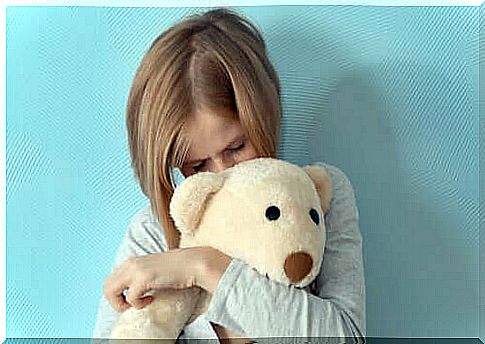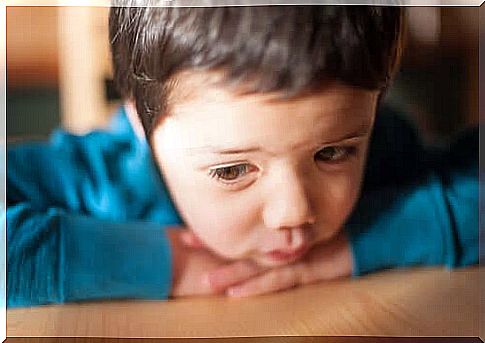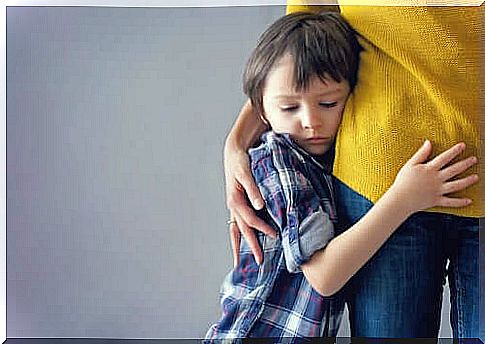Selective Mutism: Symptoms And Treatment

Today we will talk about selective mutism, a rather complex childhood disorder characterized by the inability of children to speak and communicate effectively in certain social contexts. These children are able to speak in contexts in which they feel comfortable, but have great difficulty initiating any kind of verbal or non-verbal communication in other contexts.
It is a childhood anxiety disorder – underlying anxiety – in which the social context plays an important role. For the child, interacting in an unsafe environment (such as at school) can be overwhelming. Therefore, many children, depending on the context in which they find themselves, end up adopting a selective mutism which can be total or partial.
Unlike traumatic mutism, in which the child loses speech completely after experiencing a traumatic event, children with selective mutism do not lose speech completely. They are able to talk and socialize in some environments and with some people. Their silence is a means of avoiding social anxiety.

How does it develop?
A high percentage of children with selective mutism appear to have a genetic predisposition to anxiety. They are children who show signs of severe anxiety and extreme shyness from an early age.
Statistics also show that a large number of children have a temperament that favors this conservative and in many cases incapacitating position. Some situations suggest that highly inhibited children appear to have a low amygdala excitability threshold.
This would lead the child to interpret certain events and circumstances as signs of potential danger when, in reality, they are not.
Only 20-30% of them have slight language or learning abnormalities. In these cases, the additional stress makes the child feel much more anxious when he is in circumstances where he needs to communicate.
A small percentage of children with selective mutism come from bilingual families or who have spent a period of time in a foreign country and, as a result, found themselves listening to another language during their language development (between two and four years).
The behavior of a child with selective mutism
It is important to know that a child with selective mutism has a normal communicative attitude in environments in which he feels comfortable. Parents describe their children as talkative, funny, curious and even stubborn at home.
Symptoms of selective mutism
Almost all of the symptoms of a child with selective mutism can be attributed to anxiety. Some of these symptoms are:
- Inhibition of temperament. The child is shy and extremely cautious in new situations outside the family environment. Often at home he adopts inflexible, moody and bullying behaviors. These children need to have everything under control.
- Social anxiety. Over 90% of children with selective mutism have high levels of social anxiety, despite having age-appropriate social skills (which they do not practice).
- Physical symptoms. In addition to dumbness, these children have recurrent stomach pain, nausea, vomiting, headache, joint pain, shortness of breath, diarrhea, and nervousness.
- In social situations where they feel overwhelmed, it is very common for them to display a neutral facial expression and not smile. Their non-verbal language also becomes rigid. They also avoid eye contact and seem more interested in playing alone. Some may show these symptoms in the presence of a group of children or the teacher. However, they can interact normally with some classmates.
Other possible symptoms
- Bowel, bladder or eating disorders and show a high sensitivity to very bright lights or very loud sounds.
- Alterations of touch. For example, when the skin touches clothing tags or when someone touches them or combs their hair. They are children with very acute senses, very perceptive and extremely sensitive.
- In class they tend to isolate themselves. In addition, they have difficulty following a series of instructions and are easily distracted. Despite this, many children with selective mutism are highly intelligent and focus on studies to escape social interaction.
- They can have different types of anxiety: separation anxiety, OCD, trichotillomania, specific phobias and panic disorders.

How is selective mutism treated?
Intervention therapies in children suffering from selective mutism focus on transitioning from non-verbal to verbal communication.
The main goals are to reduce anxiety, increase self-esteem and develop communication and social skills. There are different approaches from which a therapeutic intervention can be planned:
- Behavioral. Using positive reinforcement, we try to replace anxiety with positive feelings or expectations to indirectly block the avoidance response (silence).
- Of the game. Psychotherapy and other psychological approaches that help relieve the pressure of the verbalization process and allow children to relax.
- Behavioral cognitive. It intervenes on thoughts that produce anxiety. By reducing anxiety levels, the child will tend to be more communicative.
In any case, regardless of the type of intervention, the solution is never to force the child to speak. Rather, it is necessary to convey that sense of security that will allow him to reduce anxiety even in contexts he does not know and over which he has no control.









